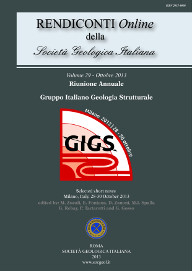
Geological surface data improve understanding of deep structures in Southern Alps
Linda Soma (a,b), Lorenzo Bonini (a), Christian Ambrosi (b), Daniel Bernoulli (c) & Silvio Seno (a,b)
(a) Department of Earth and Environmental Sciences, University of Pavia, via Ferrata 1, 27100, Pavia, Italy. E-mail: linda.soma@supsi.ch
(b) Institute of Earth Sciences, SUPSI Campus Trevano, CH-6952 Canobbio.
(c) Geologisch-Paläontologisches Institut, University of Basel, Bernoullistrasse 32, CH-4056 Basel.
Volume: 29/2013
Pages: 165-168
Abstract
The aim of this study is to understand the role of tectonic structures in the water circulation to evaluate the geothermal potential of the Stabio area, located in the southern part of Switzerland, close to the border with Italy. This site is characterized by the presence of springs, with a geochemistry different from that in nearby areas. These waters could be related to particular geological structures.
We want to understand whether the waters have a deep origin, which would be interesting for the geothermal exploration, and which structures are controlling the flow of the waters.
Quaternary deposits cover large parts of the area and limits the amount of surface information. We therefore used a multidisciplinary approach that combines surface geological information with seismic data in order to develop a regional geological model area, while, in a second step, we intend to focalize our efforts on the area of interest, the Stabio area, integrating new geochemical and geophysical data (geothermometry, inorganic and isotope chemistry). We developed a 3D geological reconstruction that integrates seismic interpretation and geological and structural data.
From the interpretation of the seismic line, the structure of Stabio may be connected to the Gonfolite backthrust. The analysis of the bed orientations shown that the strata are generally south-dipping in the northern and southern parts of the Stabio area, while in western the strata are west-dipping.
Keywords
Get Full Text